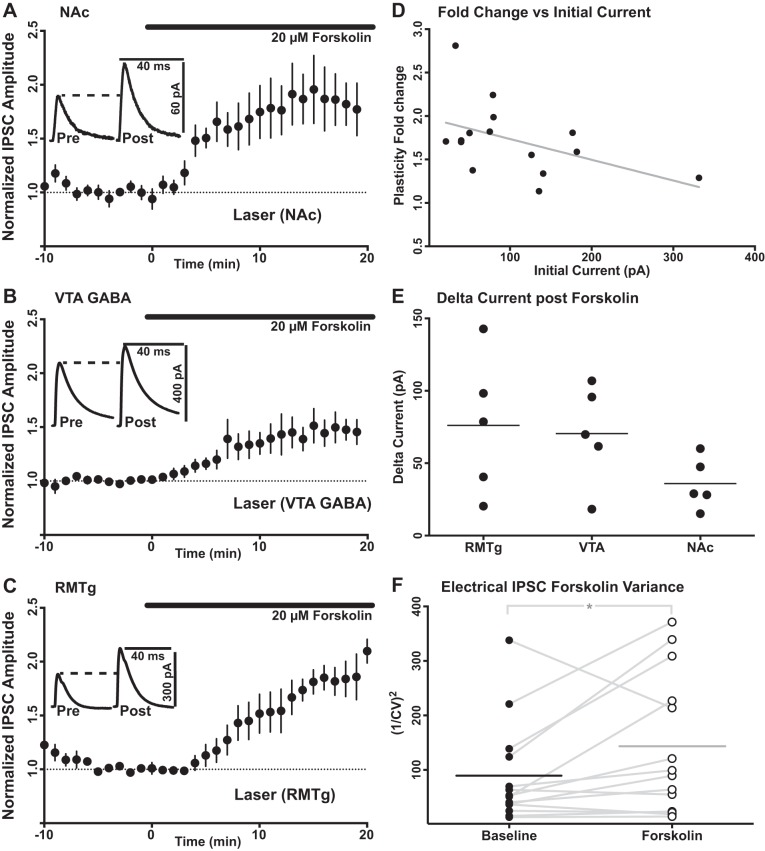Fig. 6.
Bath-applied forskolin-mediated potentiation is expressed by all 3 identified inputs. A: optically stimulated, identified IPSCs were evoked from NAc before and after bath application of an activator of adenylyl cyclase (forskolin; 20 µM). Forskolin induced potentiation of NAc-specific IPSCs (n = 5 cells, P = 0.004). B: optically stimulated, identified IPSCs were evoked from GABA neurons within the VTA that project to VTA dopamine neurons before and after bath application of an activator (forskolin; 20 µM) of the enzyme for the conversion of ATP to cyclic AMP, adenylyl cyclase. Forskolin bath application induced potentiation of VTA GABA-specific IPSCs (n = 5 cells, P = 0.005). C: unlike the cyclic GMP-dependent pathway, activation of the cyclic AMP-dependent pathway with forskolin bath application induced an increase of identified RMTg-specific IPSC amplitudes (n = 5 cells, P = 0.001). Data in A–C are means ± SE. D: no correlation was observed between baseline photo-evoked current amplitude and post-plasticity induction fold change (final current amplitude/baseline current amplitude) for forskolin bath application (r = −0.472, P = 0.10, n = 15). E: no significant differences were observed in the raw current amplitude increase (final current amplitude − baseline current amplitude) added by plasticity induction between these 3 inputs (F = 1.849, df = 2, 12, P = 0.257; one-way ANOVA, Tukey’s test). F: the mean 1/CV2 measurement for nonspecific electrical IPSC amplitudes was increased following forskolin bath application (baseline: 87.59 ± 24.46; after forskolin: 140.4 ± 33.99; P = 0.02, n = 14), suggesting that this plasticity mechanism is mediated by a presynaptic increase in neurotransmitter release probability.

